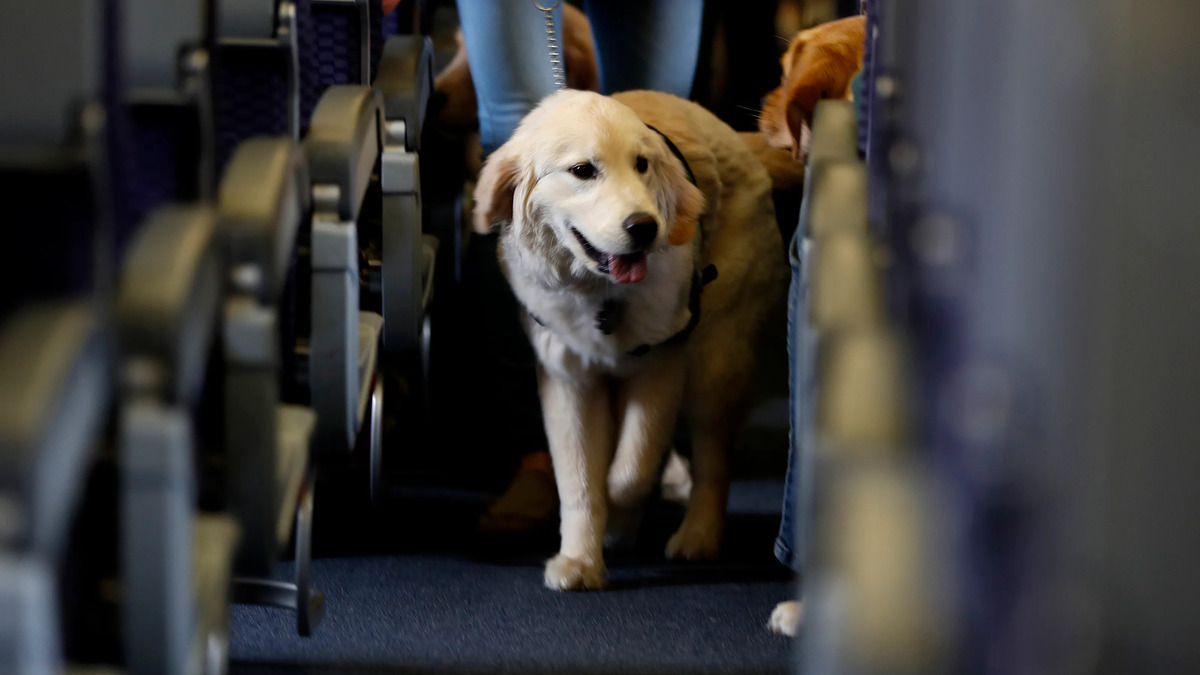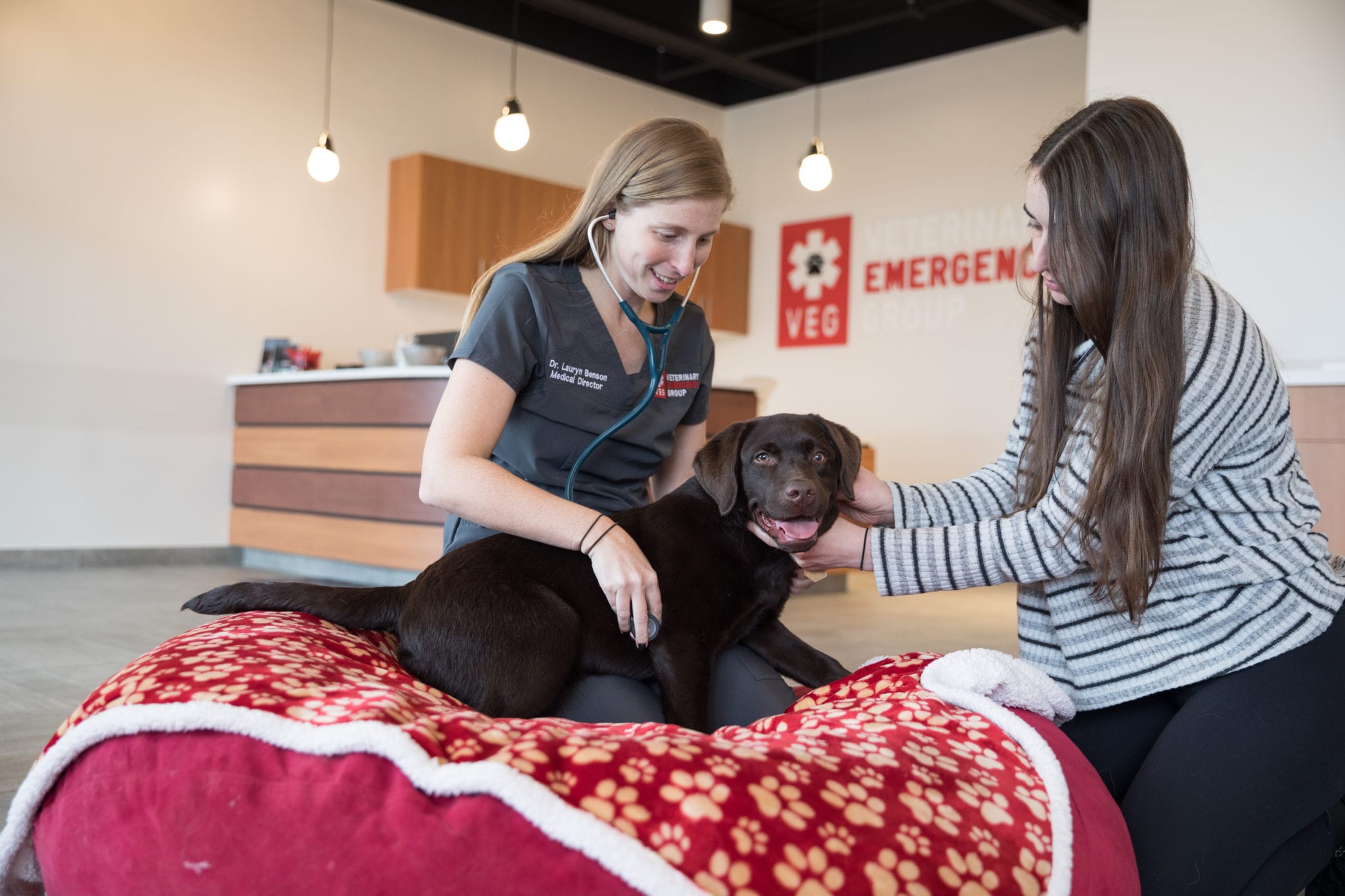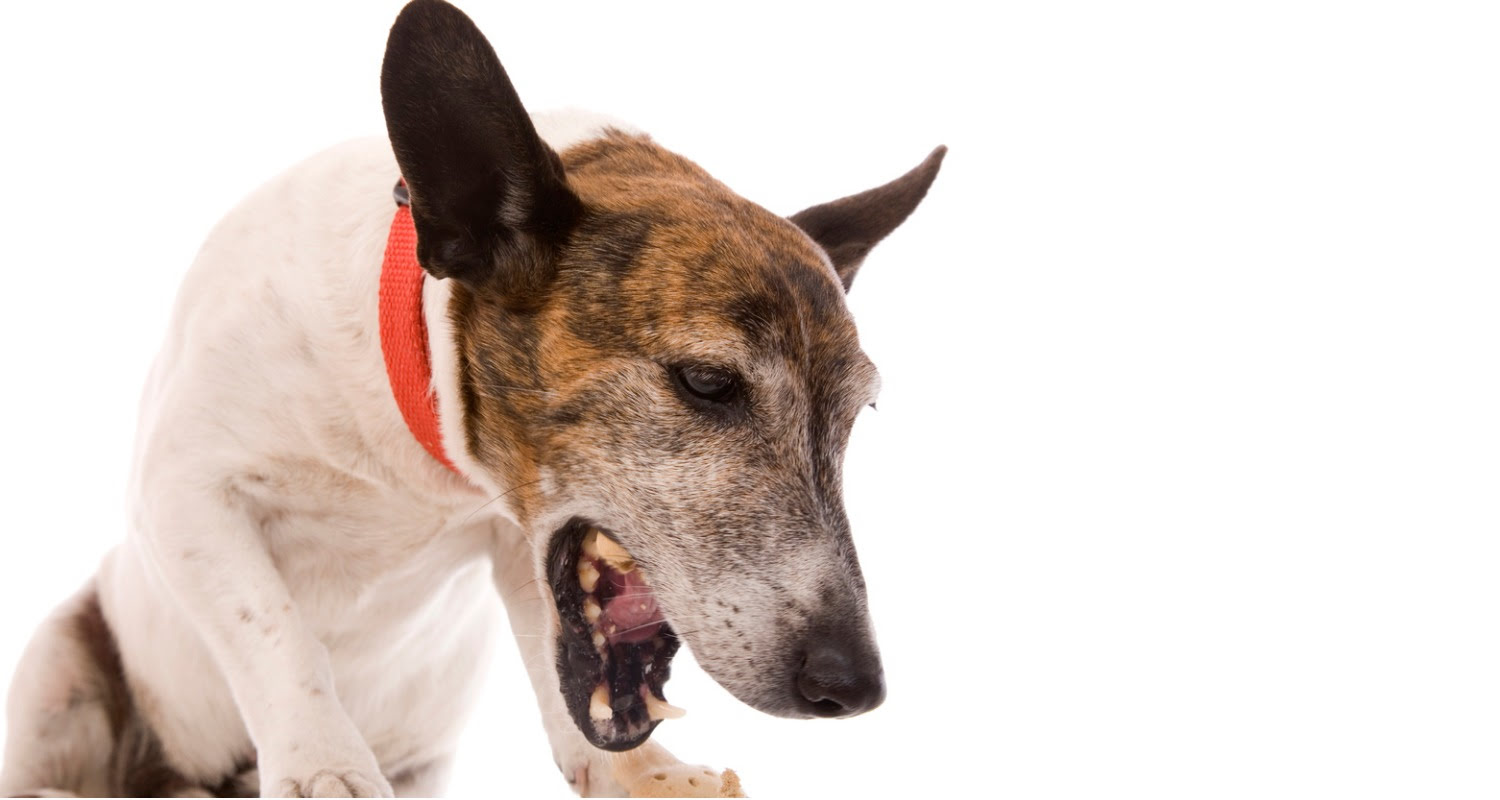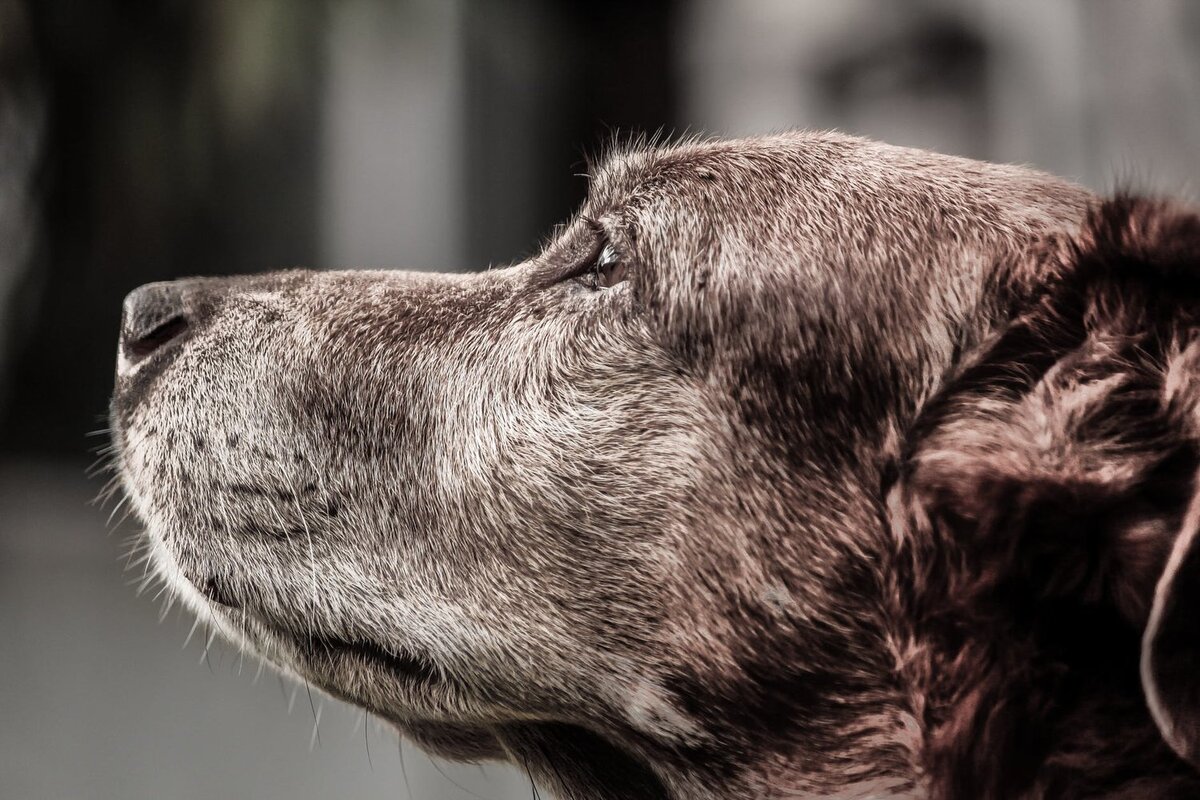Home>Health & Wellness>Common Health Issues>How To Determine If Your Baby Is Allergic To Dogs


Common Health Issues
How To Determine If Your Baby Is Allergic To Dogs
Published: January 26, 2024
Learn how to identify common health issues in babies, including allergies to dogs. Discover the signs and symptoms to watch for and how to manage your baby's health.
(Many of the links in this article redirect to a specific reviewed product. Your purchase of these products through affiliate links helps to generate commission for Pawsomeoldies.com, at no extra cost. Learn more)
Table of Contents
Introduction
Welcoming a new baby into the family is a joyous occasion, but it also comes with the responsibility of ensuring the baby's health and well-being. For families with dogs, it's important to be aware of the potential for dog allergies in babies. While dogs are often cherished members of the family, they can also trigger allergic reactions in some individuals, including infants.
Understanding the signs and symptoms of dog allergies in babies is crucial for early detection and effective management. This article aims to provide valuable insights into identifying and addressing dog allergies in babies. By recognizing the signs, exploring testing options, and learning about management strategies, parents can take proactive steps to safeguard their baby's health and create a harmonious environment for both the baby and the beloved family pet.
Read more: How To Know If Your Dog Is Allergic
Understanding Dog Allergies
Dog allergies in babies occur when the immune system reacts to proteins found in a dog's skin cells, saliva, or urine. These proteins, known as allergens, can trigger an allergic response in sensitive individuals. It's important to note that dog allergies are not caused by dog hair specifically, but rather by the proteins that dogs shed and release into their environment.
The primary allergen associated with dog allergies is a protein called Can f 1, which is produced in the sebaceous glands of dogs and is present in their dander, saliva, and urine. When a baby with a predisposition to allergies comes into contact with these allergens, their immune system may perceive them as harmful invaders, leading to the production of antibodies and the release of histamines and other chemicals. This immune response can manifest as allergic symptoms in the baby.
It's essential to recognize that dog allergies can affect babies regardless of the dog's breed, size, or coat type. Even hypoallergenic breeds, which are often touted as being more suitable for individuals with allergies, can still produce allergens that trigger reactions in sensitive babies.
Furthermore, dog allergens are not only present in the home environment but can also be carried on clothing, furniture, and other surfaces. This means that even if a baby does not have direct contact with a dog, they can still be exposed to allergens through indirect means.
Understanding the nature of dog allergies is crucial for parents and caregivers, as it enables them to take proactive measures to minimize the baby's exposure to allergens and seek appropriate medical guidance if allergic symptoms arise. By being informed about the sources and characteristics of dog allergens, families can create a safer and more comfortable environment for their baby, promoting overall well-being and peace of mind.
Signs and Symptoms of Dog Allergies in Babies
Recognizing the signs and symptoms of dog allergies in babies is essential for early intervention and effective management. While the manifestations of dog allergies can vary from one baby to another, several common symptoms may indicate an allergic reaction to dogs. It's important for parents and caregivers to be vigilant and observant, especially if a dog is present in the household.
-
Respiratory Symptoms: Babies with dog allergies may experience respiratory symptoms, such as sneezing, coughing, wheezing, and nasal congestion. These symptoms can occur when the baby is in close proximity to a dog or in environments where dog allergens are present. Additionally, if the baby's allergic response is severe, it may lead to difficulty breathing or exacerbate pre-existing respiratory conditions.
-
Skin Reactions: Allergic reactions to dogs can manifest as skin symptoms in babies. These may include redness, itching, hives, or eczema-like rashes. The skin reactions may occur upon direct contact with a dog or exposure to surfaces or objects that harbor dog allergens. Parents should pay attention to any changes in the baby's skin and seek medical advice if persistent or concerning symptoms arise.
-
Watery Eyes and Itchy Throat: Babies with dog allergies may exhibit watery, itchy eyes and throat irritation when exposed to dog allergens. These symptoms can cause discomfort and distress for the baby, impacting their overall well-being and quality of life. Persistent eye irritation and throat discomfort should prompt further evaluation by a healthcare professional.
-
Gastrointestinal Distress: In some cases, dog allergies in babies may lead to gastrointestinal symptoms, such as vomiting, diarrhea, or abdominal discomfort. These symptoms can be indicative of an allergic response and should be monitored closely, especially after the baby has been in contact with a dog or dog-inhabited environment.
-
Generalized Allergic Reactions: Severe allergic reactions, known as anaphylaxis, though rare, can occur in babies with dog allergies. Anaphylaxis is a medical emergency and requires immediate intervention. Symptoms may include swelling of the face or throat, difficulty breathing, rapid heartbeat, and a sudden drop in blood pressure. If any of these symptoms are observed, emergency medical assistance should be sought without delay.
By being aware of these potential signs and symptoms, parents can promptly address any concerns related to dog allergies in their babies. Seeking guidance from a pediatrician or allergist is crucial for accurate diagnosis and the development of a comprehensive management plan tailored to the baby's specific needs. Creating a safe and comfortable environment for the baby, while ensuring the well-being of the family pet, is paramount in managing dog allergies in babies.
Testing for Dog Allergies in Babies
When a baby exhibits symptoms that raise concerns about potential dog allergies, it becomes essential to pursue testing to confirm the presence of allergic reactions and identify specific allergens triggering the symptoms. Testing for dog allergies in babies involves a comprehensive approach aimed at providing accurate diagnostic insights and guiding the development of an effective management plan.
-
Skin Prick Test: This common diagnostic method involves applying a small amount of dog allergen extract to the baby's skin, typically on the back or forearm, and then pricking the skin to allow the allergen to enter the surface. If the baby is allergic to dogs, the immune system may react to the allergen, leading to localized redness, swelling, or itching at the test site. The size and characteristics of the skin reaction help healthcare professionals assess the baby's sensitivity to dog allergens.
-
Blood Tests: In cases where conducting a skin prick test may be challenging, particularly with very young babies, blood tests can provide valuable information about the baby's allergic response to dog allergens. These tests measure the levels of specific antibodies, such as immunoglobulin E (IgE), in the baby's blood. Elevated IgE levels in response to dog allergens can indicate the presence of dog allergies and guide further evaluation and management.
-
Elimination Diet: In some instances, if the baby's symptoms are not conclusively linked to dog allergies through conventional testing methods, healthcare providers may recommend an elimination diet. This involves removing potential allergens, including exposure to dogs, from the baby's environment for a specified period. If the symptoms improve during this period and reappear upon reintroduction of dog exposure, it can provide valuable insights into the presence of dog allergies.
-
Environmental Assessment: Assessing the baby's living environment for the presence of dog allergens is an integral part of the diagnostic process. This may involve evaluating the home for the accumulation of dog dander, saliva, and urine residues, as well as identifying potential sources of indirect exposure to dog allergens. Understanding the environmental factors contributing to the baby's allergic symptoms is crucial for effective management and allergen avoidance strategies.
-
Consultation with Allergists and Pediatricians: Seeking guidance from allergists and pediatricians with expertise in pediatric allergies is paramount in navigating the testing process for dog allergies in babies. These healthcare professionals can conduct thorough evaluations, interpret test results, and collaborate with parents to develop personalized management plans tailored to the baby's specific needs.
By pursuing comprehensive testing for dog allergies in babies, parents can gain clarity regarding the underlying causes of their baby's allergic symptoms and make informed decisions about managing the baby's exposure to dogs and dog allergens. This proactive approach supports the baby's health and well-being while fostering a nurturing and allergen-conscious environment within the family home.
Managing Dog Allergies in Babies
Managing dog allergies in babies requires a multifaceted approach aimed at minimizing the baby's exposure to dog allergens, alleviating allergic symptoms, and promoting a healthy and comfortable living environment. By implementing proactive strategies and collaborating with healthcare professionals, parents can effectively navigate the challenges associated with dog allergies in babies.
Read more: How To Know If Your Dog Is Allergic To Yeast
Allergen Avoidance
One of the primary pillars of managing dog allergies in babies is allergen avoidance. This involves taking measures to reduce the presence of dog allergens in the home environment. Regular and thorough cleaning, including vacuuming carpets, washing bedding, and using high-efficiency particulate air (HEPA) filters, can help minimize the accumulation of dog dander and other allergens. Additionally, creating designated dog-free zones within the home, such as the baby's bedroom, can serve as protective spaces where the baby can spend time without direct exposure to dog allergens.
Pet Grooming and Hygiene
Maintaining the hygiene and grooming of the family dog is essential in managing dog allergies in babies. Regular bathing and brushing of the dog can help reduce the shedding of allergens and minimize their presence in the home environment. It's important to enlist the support of family members or professional groomers to ensure that the dog's coat and skin are kept clean and well-maintained. Furthermore, establishing a routine for washing the dog's bedding and toys can contribute to a healthier indoor environment for the baby.
Consultation with Healthcare Professionals
Seeking guidance from pediatricians and allergists is crucial for developing a comprehensive management plan tailored to the baby's specific allergic sensitivities. Healthcare professionals can provide personalized recommendations for allergy-friendly products, such as hypoallergenic bedding and air purifiers, as well as offer insights into potential medical interventions, including allergy medications or immunotherapy, if deemed appropriate for the baby's condition.
Education and Awareness
Educating family members, caregivers, and visitors about the baby's dog allergies is essential for fostering a supportive and allergen-conscious environment. Clear communication about the baby's allergic sensitivities, the importance of allergen avoidance, and the signs of allergic reactions can help prevent inadvertent exposure to dog allergens and promote the baby's well-being. Additionally, raising awareness about the baby's allergies within the broader community can contribute to a more inclusive and understanding social network.
Ongoing Monitoring and Adaptation
Regular monitoring of the baby's allergic symptoms and environmental factors is vital for assessing the effectiveness of allergen avoidance strategies and making necessary adjustments. Parents should remain attentive to any changes in the baby's health and consult with healthcare professionals if allergic symptoms persist or worsen. Flexibility and adaptability in managing dog allergies in babies are key to refining the approach and ensuring the baby's comfort and safety.
By integrating these proactive measures and collaborating with healthcare providers, parents can navigate the complexities of managing dog allergies in babies with confidence and diligence. Creating a supportive and allergen-aware environment within the family home fosters the baby's health and well-being while nurturing a harmonious coexistence between the baby and the beloved family pet.
Conclusion
In conclusion, the presence of dog allergies in babies necessitates a proactive and informed approach to safeguard the baby's health and well-being while maintaining a harmonious environment with the family pet. By understanding the nature of dog allergies, recognizing the signs and symptoms, pursuing comprehensive testing, and implementing effective management strategies, parents can navigate the complexities of managing dog allergies in babies with diligence and care.
It is essential for parents and caregivers to remain vigilant and observant, particularly if a dog is part of the family dynamic. Respiratory symptoms, skin reactions, watery eyes, and gastrointestinal distress are potential indicators of allergic reactions in babies exposed to dog allergens. Prompt recognition of these symptoms and seeking guidance from healthcare professionals are crucial steps in addressing potential dog allergies in babies.
Comprehensive testing, including skin prick tests, blood tests, and environmental assessments, provides valuable diagnostic insights and guides the development of personalized management plans. By gaining clarity regarding the baby's allergic sensitivities and the specific allergens triggering the symptoms, parents can make informed decisions about allergen avoidance, pet grooming, and potential medical interventions.
The multifaceted approach to managing dog allergies in babies encompasses allergen avoidance, pet grooming and hygiene, consultation with healthcare professionals, education and awareness, and ongoing monitoring and adaptation. By integrating these strategies into the family's daily routines and seeking support from pediatricians and allergists, parents can create a nurturing and allergen-conscious environment that prioritizes the baby's health and comfort.
Ultimately, the journey of managing dog allergies in babies is a collaborative effort that involves proactive measures, open communication, and ongoing vigilance. By fostering a supportive and allergen-aware environment within the family home, parents can promote the baby's well-being while nurturing a positive and inclusive relationship between the baby and the cherished family dog. Through dedication, education, and a commitment to the baby's health, families can navigate the complexities of dog allergies in babies with compassion and resilience.













